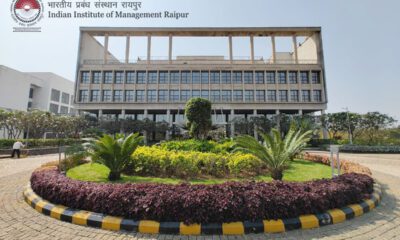Priority sector lending dates back to1966, when Morarji Desai saw a need to expand credit to agriculture and small businesses. However, a Reserve Bank of India (RBI) study in the National Credit Council in 1972 was the first to formalise the PS concept. Indira Gandhi was able to assuage important political concerns after bank nationalisation thanks to the PS formulation. Over time, the PS concept expanded to include important overlooked sectors of the economy, rather than being restricted to powerful lobbying groups. Despite the changes, the classification continues to place a strong emphasis on agriculture and small businesses (also known as micro, small, and medium enterprises or MSME).
Banks lend nearly 40% of their adjusted net bank credit (ANBC) to the priority market, amounting to Rs39,50,205 crore. As we fight Covid-19 today, the crucial question is whether the PS meaning needs to be modified. Is legitimate infrastructure, such as health care, well-served? Are we taking advantage of JAM’s complete potential— full access to Jan Dhan accounts, universal Aadhaar numbers, and near-universal mobile penetration— to fix problems that PS lending can’t solve but direct benefit transfers (DBT) can?
PS is divided into eight distinct fields. Agriculture is the most significant, with an 18 percent goal for total ANBC. MSMEs are another significant group. Housing, export credit, education, social infrastructure, and renewable energy are among the five PS industries.
Loans for setting up schools, drinking water facilities, and sanitation facilities, including construction/renovation of household toilets, and water improvements at the household level, are all covered by social infrastructure lending limits, which cover loans up to a maximum of 5 crore per borrower. It also includes loans for the construction of health care facilities in Tier II to Tier VI cities up to a maximum of ten crore per borrower. Loans for research or vocational courses fall under the education category. Furthermore, 12 percent of loans must go to specified weaker parts, 7.5 percent to micro enterprises, and 10% of the agriculture goal must go to small and marginal farmers.
This formulation, we conclude, needs to be reconsidered. To begin with, it is surprising that health is only a sub-category of social infrastructure, with a cap of ten crores for hospital construction. There should be a broad separate category in which we encourage “right size” rather than “small size” hospitals, which are large in metropolitan areas but smaller elsewhere.
Second, there is an urgent need for institutions to train nurses, health technicians, and health machine operators, as well as basic technology and digital device training more generally. In his book Bridgital Nations, Tata chairman N Chandrashekharan brilliantly captures this.
Third, the credit cap for educational facilities is just Rs. 5 crore. Finally, PS lending could provide loans for the purchasing of computers and smart phones for low-income individuals.
Assessing whether PS lending is the right type of intervention for some of its targeted categories is a related issue. Aren’t some PS categories better served by grants than by enabling banks to lend to micro finance institutions? In agriculture, how effective has lending to the weaker sections and small and marginal farmers been? After 50 years, they are all struggling. Non-performing assets (NPA) in the loan portfolios of banks lending to these groups in agriculture are in the double digits, rendering the sector economically unviable for them.
Giving loans to this group of borrowers with a high likelihood of default creates corruption opportunities for bank executives and moral hazard for the established beneficiaries. Big defaults in a segment disincentivize farmers from repaying their loans, and the overall credit climate is tainted by large defaults.
Converting a portion of PS lending to a grant paid directly by the government will increase the value of public sector banks significantly while also increasing system performance. Indeed, we believe that banks should be willing to pay for a portion of the total grant amounts through a special cess levied on them for this reason. It could be measured as the expense of their NPAs in the section, leaving them in the same position as before.
Covid-19 has made us rethink a lot of stuff from the past. Infrastructure for health and education has received a lot of attention. As we all settle into new ways of working and learning, it has highlighted the value of digital access. PS classification should reflect this, and we should take advantage of our technology stack’s (and JAM’s) capabilities to target and distribute grants to the most vulnerable sections. This, however, would not be enough to compensate for the significant rise in state government health and education budgets that is needed to repair our social infrastructure.
Article 2
Use decentralized/district-level guidelines to alleviate Covid-19 restrictions.
Our response strategy has revolved around the slogan “test, test, test” since the Covid-19 pandemic struck India. RT-PCR and Rapid Antigen Test kits, as well as an ambitious combination of different platforms, have helped India expand its testing potential. These strategies allowed us to hit 1.2 million tests per day in September2020, and 2.2 million tests per day in May of the following year. In January, this was followed by the launch of two India-made vaccines.
Now that India is experiencing a second boom, state governments have enacted restrictive policies. While restrictions have been largely effective in preventing the spread of infection, they are not a long-term solution. So, what does an evidence-based approach to the situation look like? What can be called a not-too-late nor-too-early relaxation of constraints, as each case is different?
A decentralised pandemic response based on three pillars— district-level test positivity rate, vaccine coverage, and a bottom-up decision-making process — is the solution. Since we were dealing with a novel virus and regulatory mechanisms had to be set up, centralisation was crucial during the first wave. However, given the large variation in disease transmission between states, these decisions must now be decentralised and based on local data. At the district level, restrictions on travel, public meetings, and social activities are enforced. To make these decisions based on district-level data and patterns, we need to involve districts even more. Although monitoring is essential, assessment tools should be simple to use, avoiding a long list of requests that prolongs the decision-making process. Instead, we can concentrate on three main variables.
The first pillar should concentrate on districts with a test positivity rate (TPR) of less than 5%.TPR is the percentage of positive Sars-CoV-2 tests out of all those conducted. This will remain the most important metric for making informed decisions.
The second pillar is sufficient vaccination coverage for priority and vulnerable populations, which should be a consideration when considering opening up. Even if the cases increase, vaccinations in the most vulnerable population groups must be increased to ensure that fewer people die. The fact is that it will take a few months for vaccine supplies to hit the standard of adequacy in terms of doses.
The third pillar is group ownership. All administrative interventions are doomed to fail without group ownership, in which people engage in Covid-appropriate behaviour such as masking and maintaining physical distance.
The pandemic has compelled us to reconsider the standards that control our responses to it. While we live in silos and demand that punitive laws be maintained or that new treatments and prevention be implemented on a daily basis, we must understand the effect on people’s lives and livelihoods. As a result, our pandemic response must be driven by local data and carried out and supervised by a versatile administrative structure.





 Health1 day ago
Health1 day ago


 Special Editions1 day ago
Special Editions1 day ago


 Special Editions3 months ago
Special Editions3 months ago


 Special Editions1 day ago
Special Editions1 day ago


 Special Editions1 day ago
Special Editions1 day ago













